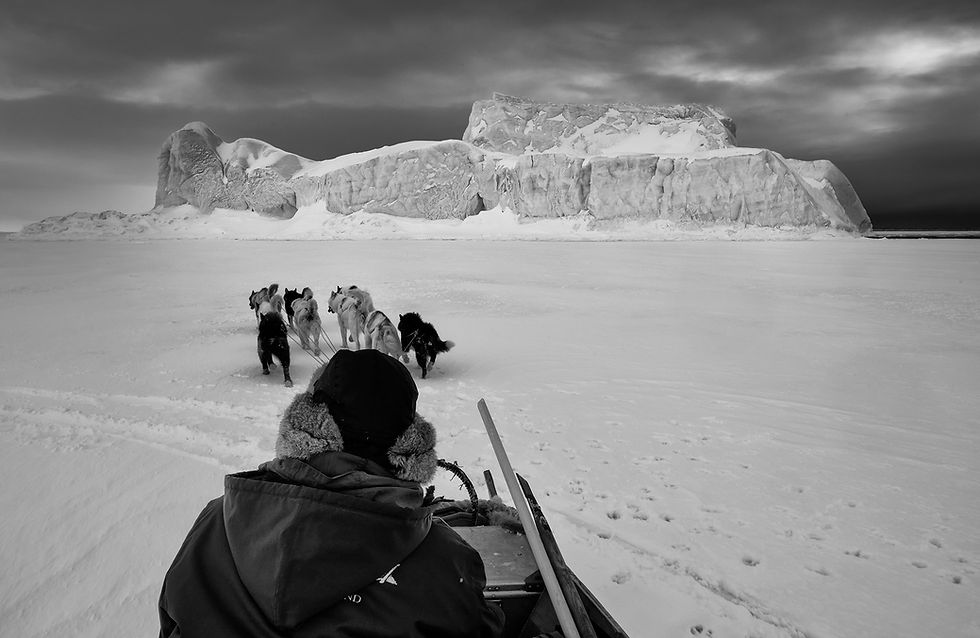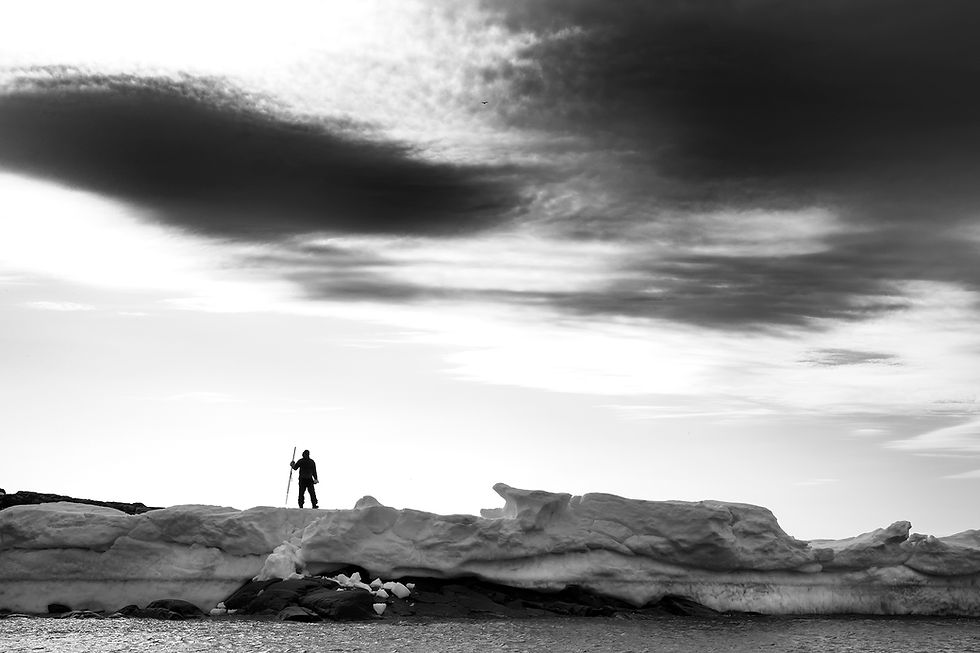In Greenland: CLIMATE CHANGE IS NOW!
- Carsten Egevang
- Jun 13, 2020
- 5 min read
Updated: Nov 12, 2020

Greenland, Photography and Climate Change
Outside the Arctic, global climate change is addressed through abstract mathematical models and prophecies of conditions in some distant future.
In Greenland, it is different! Here, climate change is real, present and happening at a rapid pace. The residents both humans and animals, are experiencing fundamental changes in the surrounding environment on a daily basis.
The traditional way of life in Greenland is being threatened today. Each passing season witnesses the period with sea ice becoming shorter. This is affecting the migration routes of the animals and the opportunities of transportation for the local peoples. I feel it is urgent for me as a photographer to document the strong hunting traditions of Greenland before it is too late. That is why I keep coming back year after year with my camera.
Greenland is an amazingly beautiful place, and the natural scenery in Greenland is unmatched. But Greenland is also an extremely harsh place to survive, whether you are animal or human. Through my photography I wish to get behind the natural beauty of the country and capture something of life in the Arctic.

Climate change is here!
Greenland has become the epicenter of global climate change. Each year scientists from all over the World conduct fieldwork in Greenland in their search of a better understanding of climate change. Over the last decade numerous politicians and world leaders has visited Greenland to express their concern. The effects of climate change reach beyond the people of the Arctic.
Although researchers sometimes dispute the exact time frame and the extent to which climate change will affect our daily lives, there is scant reason to question the existence of climate change. Multiple well-documented studies and extensive volumes of data have created a general consensus on the following:
Arctic climate systems play a significant role in the global climate systems
The warming of the Arctic happens almost twice as fast as the rest of the planet. This is referred to as “Arctic Amplification”
The extent of sea ice in the Arctic is diminishing. The thickness of the sea ice is also decreasing. This is due to an increase in sea surface temperatures
Within this century the Arctic Ocean will become completely ice-free during summer
Extreme weather events occur more frequently as a consequence of climate change
Climate change releases a number of cascading climate effects and climate feedback effects. We are only beginning to scratch the surface in our understanding of these effects
Current global temperature increases are human induced

King of the Arctic - an icon species of climate change
No animal species more than the polar bear signifies The Arctic. The world’s largest bear has at the same time become the very emblem of climate change. The polar bear is well-adapted to a life in an environment of sea ice. As the ice conditions are highly plastic and changes throughout the season – so does the behavior of the polar bear. The yearly circle of the polar bear varies between periods with abundance of food and long periods of food deprivation. Although it may take other prey such as beluga, narwhal or walrus, the polar bear depends highly on one single species: the ringed seal. The annual circle of the bear is strongly synchronized with that of the ringed seal.
In order to catch ringed seals the polar bear requires sea ice. Less sea ice means a reduction in the hunting grounds of the polar bear. A recent analysis of the ice conditions in the 19 subpopulations of polar bears found that the season with sea ice has been shortened by 7 weeks over the past 35 years. The season where the bears gain fat reserves to cope with the periods of starvation has been significantly reduced.
Paradoxically, the hunters of Greenland are reporting more polar bear observations than ever before. Bears are encountered closer to towns compared to two or three decades ago. Hunting journeys for polar bears are becoming shorter and the annual quota is used up earlier each year. The hunters are arguing that bear numbers are increasing while scientists say bear encounters are increasing because of reduced sea ice.

A warmer climate threatens the Muskoxen
Another iconic Arctic species, the muskox, survives in some of the World’s most harsh and extreme environments. This is only possible due to perfect adaptations to the severe cold temperatures of the Arctic. The dense inner wool has insulating capacity eight times greater than sheep’s wool. Combined with heavy, long-haired outer fur the animal can survive the long winters of Greenland, where temperatures may drop below minus 40 degrees. Muskoxen are further adapted through having a digestive system that is highly efficient in obtaining nutrition from sparse vegetation. The food of the muskoxen is buried under snow during the long winter, but heavy hoofs and a powerful muzzle makes it possible to reach the plants under the snow.
The muskoxen can cope with the extreme low temperatures, but a problem occurs when the climate becomes warmer. When the snow melt and freeze again a layer of ice prevents the animal from reaching the vegetation. The average summer temperatures in Northeast Greenland have risen from 3 to 6 degrees Celsius in just two decades. These profound changes have resulted in poor body condition of adults, low reproductions rates and high die-off among the calves. Furthermore, a warmer climate introduces parasites and diseases that were formerly in the muskox populations of the Arctic.

A farewell to the dogs?
There is hardly a better symbol for traditional Greenlandic life style than the sled dog and the culture connected to dog sledging!
Throughout the past, the Greenland sled dog has been crucial for survival in the Arctic, and genetically, the dog breed in Greenland is unique. Today, the use of dog sledding is still a prominent role in Greenland. In order to preserve the sled dog culture the Greenland Government has banned the use of snow mobiles for hunting. But things change. In just two decades, the number of sled dogs in Greenland has more than halved.
The main explanation for the drastic decline is to be found in the absence of sea ice. The season where the ice is stable and sledding is possible will be shorter year in year in Greenland. At the same time, it is a lot of work to provide food for the dogs. Imported dog food plays an increasingly important role, rather than traditional food like seals obtained from hunting. This means that an increasing number of mushers today put the whip on the shelf and give up keeping dogs. The Greenland sled dog is becoming a threatened species.
I’ve joined a research and communication project, Qimmeq – the Greenlandic word for dog – that focus on the Greenland sled dog genetically, the importance in the past and not the least: the role of the dog in today’s Greenland. The main output of the project is a travelling exhibition along with a book publication that I will be editing and illustrating with my photos.

Comments